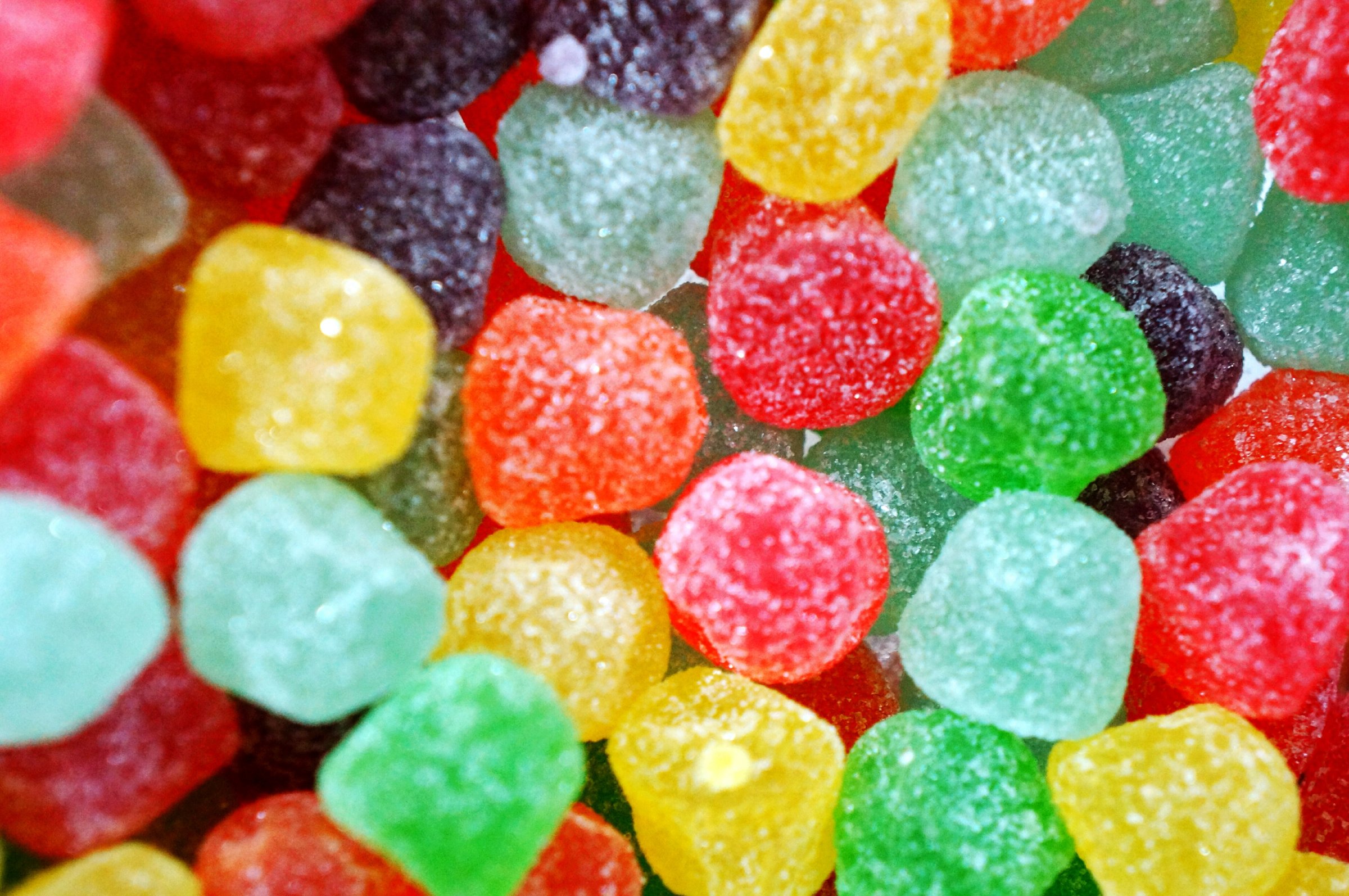
You swore this year would be different, that you’d follow all the healthy-Halloween tips: You’d stock up at the last minute to avoid month-long temptation, you’d only buy varieties you don’t like (looking at you, Bit-O-Honey). But that variety bag of Kit-Kats was irresistible, and between that and the neighborhood-haul candy the kids rejected (how can they not like Mounds bars??), you’re nursing a pretty heavy candy hangover. Ouch.
How did this happen (again)?
Sugar hangovers happen, to grownups and kids alike. In fact, almost all kids and about half of adults consume candy on Halloween (compared to just under a quarter of both groups on a typical day). And Americans consume about 4 percent of their yearly candy intake on October 31–which calculates to almost a pound per person. Yet according to the American Heart Association, adult women should consume no more than 6 teaspoons of added sugar per day (about 24 grams); preschool and elementary school age children, 3-4 teaspoons (12-16 grams); and older kids 5-8 teaspoons (20-32 grams). To put this into context, for women that would be no more than three fun size Snickers bars, for preschoolers no more than two, and teens and tweens no more than three to four, explains Jessica Decostole, RD, LDN, a clinical dietitian at Good Samaritan Hospital in Baltimore.Willy Wonka could steer a boat between the recommended 3 fun size candy bars and the actuality of 1pound of the stuff. The scary part is, processing all that extra sugar takes a toll on our bodies—kids and adults alike—and can make us crave even more.First you feel the sugar high: “In the short term, a sugar binge can make you feel very energetic,” says Decostole. “Research suggests that when we ingest sugar our dopamine levels surge—this is the same ‘feel-good’ hormone that’s released when a person doses drugs. Although sugar doesn’t induce the same amount of dopamine as drugs, researchers are looking to uncover the addicting properties of sugar.”
But then comes the inevitable crash. “When you eat an excessive amount of sugar, your pancreas goes into overdrive pumping out insulin to get all that glucose out of your bloodstream and into your muscle cells so it can be used for energy,” says Decostole. The excess insulin causes your blood sugar to drop fast, which can activate your body’s stress response and result in the release of stress hormones like cortisol and adrenaline.
“As your body works to control that high glucose level, you feel tired, bloated, or even nauseaus,” says Susan Dopart, RD, CDE, author of A Recipe for Life by the Doctor’s Dietician. These feelings can last anywhere from a few hours to a few days, depending on your insulin sensitivity.
Of course, you also might crave more sugar: Insulin suppresses the hunger hormone leptin, which tells you you’re full—so your body sees no reason to stop the candy binge. At this point, your instinct is to reach for another Rolo to feed your seemingly-empty belly and give you a much-needed jolt of energy. Resist! It will just make you feel worse.
Recovery tactics
Much like an alcohol hangover, there are ways to minimize the physical symptoms of a candy hangover immediately. To start: Lace up those sneakers and get moving. “If you’ve eaten a lot of sugar, counteract it with physical activity,” Decostole says. “Going for a walk will help burn off some of that sugar right away.”
Thinking of sleeping it off instead? Between your body working overtime to process the glucose coursing through your system and any caffeine from chocolate messing with your Zzs (FYI: the darker the chocolate, the higher the caffeine content), it probably won’t be the soundest slumber you’ve ever had. “A sugar binge creates instability in the body because of fluctuating blood sugar,” says Dopart. “And that creates a nervousness that can set the stage for disrupted sleep.”
To combat that morning-after tired, sluggish feeling, start the day with plenty of water and a meal that’s high in protein, moderate in fat, and low in carbs, says Decostole. “The protein and fat will help keep you full,” she says. “And the relatively low carb intake will encourage your body to burn some of yesterday’s stored sugar for energy.” She suggests a breakfast of two boiled eggs and a slice of toast with avocado slices, or a slice of toast with peanut butter and a low-fat string cheese.
This article originally appeared on Real Simple
More from Real Simple:
More Must-Reads from TIME
- Cybersecurity Experts Are Sounding the Alarm on DOGE
- Meet the 2025 Women of the Year
- The Harsh Truth About Disability Inclusion
- Why Do More Young Adults Have Cancer?
- Colman Domingo Leads With Radical Love
- How to Get Better at Doing Things Alone
- Michelle Zauner Stares Down the Darkness
Contact us at letters@time.com